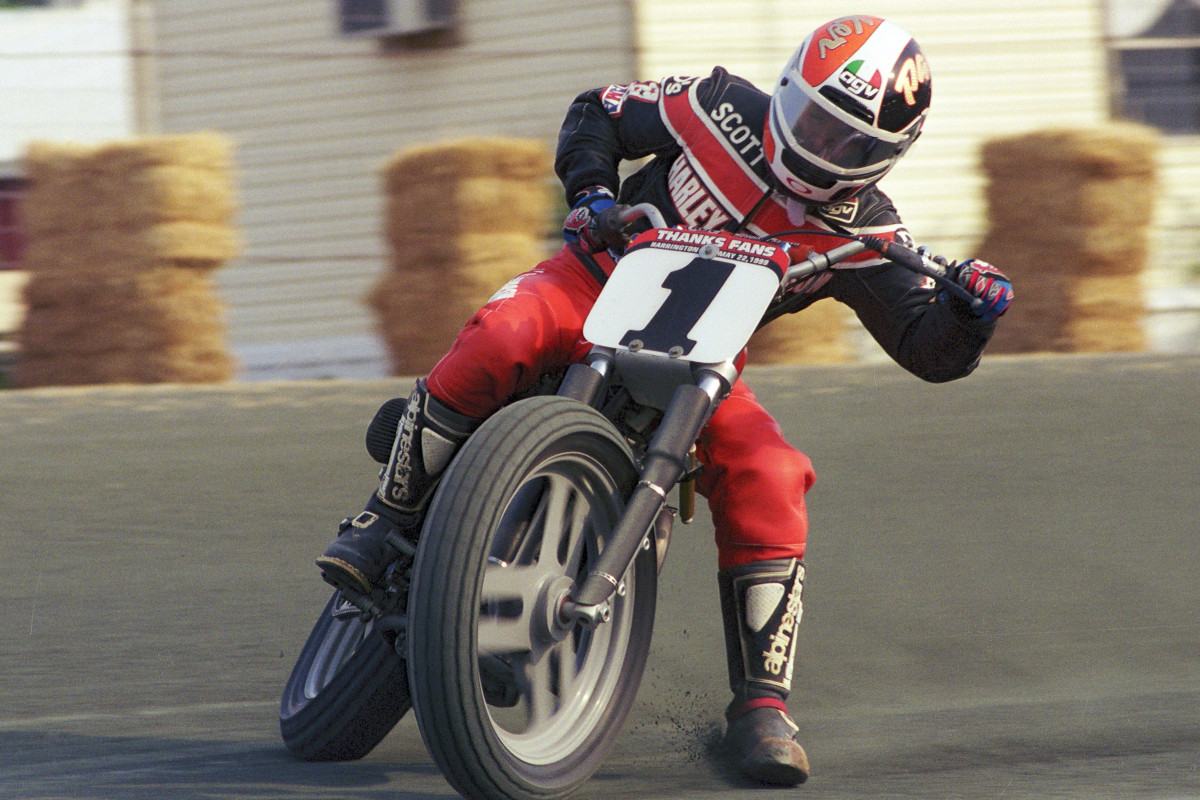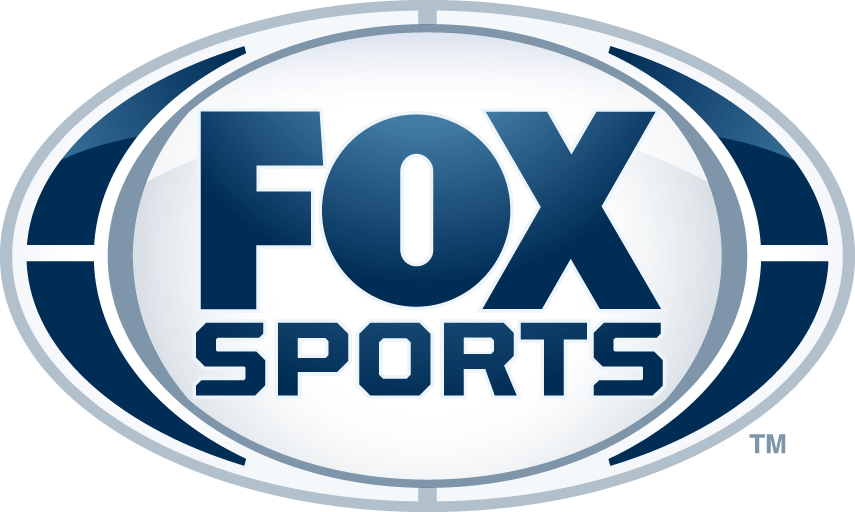
Celebrating 50 Years of the Harley-Davidson XR750: Part I of IV
If forced to condense the long, illustrious history of the Grand National Championship into a single mental image, what would jump into your head?
Would you drift back to the mid-’70s and envision an epic showdown featuring legendary champions Jay Springsteen, Kenny Roberts, and Gary Scott?
Or maybe the mid-’80s, when superstars Ricky Graham and Bubba Shobert went to war with double champ Randy Goss and an up-and-coming Scott Parker?
For many -- perhaps even most -- it would have to be the mid-’90s, after Parker had long since established himself as the most successful rider in series history, but then found himself pushed to the very brink by fellow GOAT candidate Chris Carr?

Carr at his final Lima Half-Mile appearance in 2011.
Photo: Dave Hoenig, Flat Track Fotos
The mid-2000s looms large in the formative memories of today’s dirt track heroes -- an era dominated by Carr, who had taken the torch from Parker and was doing all he could to not relinquish it to the likes of Joe Kopp, Jake Johnson, Kenny Coolbeth, Jr., and Jared Mees.
And to finish out that trend, the mid-’10s wouldn’t be a terrible selection either -- a time in which future Hall of Famers Mees, Bryan Smith, and Brad Baker helped set the table for the new golden age currently being enjoyed by the revitalized American Flat Track series.

"The Piper" Bryan Smith leading a pack around the Mile aboard his XR750.
Photo: Dave Hoenig, Flat Track Fotos
But whatever era you chose, it’s almost unavoidable that mental image would prominently feature Harley-Davidson’s iconic XR750 -- just as it did in all of the examples provided above.

Photo: Harley-Davidson
The overwhelming mindshare the XR750 has acquired in dirt track circles is backed in full by the numbers, which are staggering… numbers that should not be possible in a technologically-driven endeavor such as motorsport.
We’re talking incomprensible, ridiculous numbers... 37 Grand National Championships and 502 premier-class Main Event victories for starters.
But for all the sensational statistics, one number stands out at this moment: 50.
The XR750 was introduced into Grand National Championship competition in 1970, a full half-century ago. And as the XR did its very best to practice social distancing from the competition over the decades, this seems like the ideal time to celebrate an industry-defining machine in a multi-part feature.
“It is an absolutely remarkable achievement for how long the XR750 dominated the AMA field… earning the description of being the ‘most successful racebike of all time’ in the process,” said Jon Bekefy, Harley-Davidson’s GM of Global Brand Marketing. “That dynasty is crazy for any motorsports machine, two wheels or four.”

Photo: Harley-Davidson
How is it even possible that a racebike, of all things, could not only remain competitive, but dominant for such a vast stretch of time?
It’s difficult to grasp, let alone explain, but it’s as if the stars aligned… and then stayed aligned for nearly five decades. The XR750’s irreplicable record is the result of an astutely engineered platform, continually developed in both radical and subtle ways, applied to a sport where traction is imperfect by definition, and mastered by multiple generations of the most accomplished racers and tuners two-wheeled sport has ever known.
The list of all time greats already inducted into the AMA Hall of Fame whose legends were built in concert with the XR750’s runs into the double digits -- names like O’Brien, Werner, Springsteen, Parker, Carr, Brelsford, Scott, Eklund, and Goss. And the future Hall of Fame candidates who earned Grand National Championships on the machine are destined to further expand that list -- names like Kopp, Coolbeth, Johnson, Mees, and Baker.
Chief among those masters is the aforementioned Scott Parker, who is arguably more closely associated with the XR750 than any other rider. During his time, Parker earned a jaw-dropping nine Grand National Championships and 94 Main Event wins (nearly all of them on the XR750).

Parker wins this 1988 showdown ahead of the Honda-mounted Dan Ingram, Bubba Shobert & Alex Jorgensen.
Photo: Dave Hoenig, Flat Track Fotos
To add some perspective to the astounding longevity of the XR750, consider that following the conclusion of a 20-year GNC career, Parker came out of retirement 20 years ago to win the Springfield Mile one last time. Now consider that by the time he first threw a leg over the XR750, it was already considered a legendary machine with five national titles stacked in its corner.
Even as the decades have ticked along, Parker still has vivid memories of his first time on the XR. “The first time I got to ride one is one of my greatest memories. My buddy flew down and picked one up on an airplane and brought it back. I just couldn't wait to ride it. It had so much more horsepower than anything I had ever ridden. To get on that thing -- and just the way it delivered the horsepower... Wow!
“I was more of a cushion rider, and you just get it in a corner and you could just give it the gas. It would turn the rear wheel and start putting traction down to the ground and down the straightaway you'd go. The first time I got on it, I remember going, 'Oh my gosh, this thing is badass.'”
The AFT paddock is lined with riders with similar tales of their anticipation of riding an XR750 for the first time and then having it meet, if not exceed, all the hype.
2000 Grand National Champion Joe Kopp, who happens to be the same age as the XR750, said, “I remember... Gosh... It was probably '90 or '91. I was new to a twin -- I had ridden a Triumph a little bit but definitely never an XR750.

Joe Kopp attempting to tackle the titan Parker in 1999.
Photo: Dave Hoenig, Flat Track Fotos
“That was the one everyone wanted to be on. It was just kinda the bike you dreamed of. And when I finally got to ride one… ‘Holy Smokes!’ I just couldn't believe I was on one, and how it put the power to the ground compared to all the bikes I had ridden before that.
“I was working with Vance & Hines and Harley a couple years ago (developing the XG750R), and with Indian (developing the FTR750), and the XR750 was still their benchmark. Even though the Indian is doing really well, they still sometimes look for ideas from the XR750. It's pretty crazy to think it was designed and built 50 years ago.”
That same sort of awe is shared by the sport’s fanbase at large. Bekefy, who worked at Ducati,
IMZ Ural, Mission Motors, Alta Motors, and Triumph prior to taking his current position at H-D, still views the XR750 through the eyes of a fan.
“When I was a young kid from San Francisco, Harley-Davidson was two things: Easy Rider and flat track. I knew all these names; Parker, Springer, and for sure Carr. Norcal has a deep flat track legacy regardless of brand or rider, but those names I knew like I knew the States’ names.

Parker leads an entire pack of the greats including Nicky Hayden at the 1999 Springfield Mile.
Photo: Dave Hoenig, Flat Track Fotos
“It’s a legacy alive in the pits of AFT racing today. It’s awesome to hear stories of how the XR750 has played a pivotal role in the racing community. From late-night wrench sessions to the checkered flag, so many people have fond memories of the bike, and that continues to stick with me.”
While not intentional, it’s apt Bekefy should mention Easy Rider; the XR750’s generations-spanning success is due in no small part to the fact that, for all its power, it’s a famously easy-riding machine, albeit one far removed from the “Captain America” and “Billy Bike” H-D Hydra-Glide choppers featured in the film.
Kopp explained, “I see a fair amount of young kids who hop on an XR750 for the first time and do pretty darn good. I just think it generally puts the power to the ground and is such a super easy bike to ride... Big flywheels, doesn't rev up all that quick...
“Actually, to me, as a racer, it could be kinda frustrating when we went to an easy track -- like a real round, circle track that wasn’t real technical. When we were all on XR750s, everybody was so dang fast. Instead of five or six guys up front, it was 15. I was like, ‘Oh s---... here's another one of those races.”
Bill Werner had a hand in developing the original cast-iron XR750 first introduced in 1970, and then played a critical role in transforming it into the all-dominant aluminum XR750 a couple years after that. As a race tuner of XR750s, he’s credited with 13 Grand National Championships and 130 Main Event wins. In other words, he knows its secrets better than anyone.
And one of those secrets is the fact that riders tuned themselves to the XR750 as much as the bike was tuned to them. Due to its rider-friendly nature, decades of racers built their styles around its strengths, creating a feedback loop of championship-winning glory.

Parker and George Roeder.
Photo: Dave Hoenig, Flat Track Fotos
Werner said, “So many riders, their internal clocks -- their skillsets -- revolved around the unique idiosyncrasies of that motorcycle. So when they jumped on something else that was foreign to them, that accelerated differently... like the Kawasakis and stuff that had lighter flywheel mass and maybe more horsepower... Some guys found it difficult to adapt to something different from what they knew.”
Incredibly, even while celebrating the 50th anniversary of the XR750, it’s not dead yet, even if the factory Harley-Davidson squad moved on with the XG750R a few years back.
The XR750 reigned supreme at the very pinnacle of the sport as recently as 2017, when Jeffrey Carver Jr. dominated the Lone Star Half-Mile, leaving a stacked field of Indian FTR750s, Kawasaki Ninja 650s, H-D XG750Rs, and Yamaha FZ-07s in his wake.
And just last season, Danny Eslick raced his way into the Main and snared a handful of championship points on an XR750 at the Lima Half-Mile.
Reflecting on its modern-day success, Parker said, “You can look at the lap times over the decades. Bryan Smith only recently took one of the records I had at Springfield. All these years, the XR has been... Some of these other bikes may be faster, but it just delivers the power and the traction to the ground and that’s what really matters.”
Kopp took it a step further. “I've got a really good, fresh one, sitting inside my home. If I ever dig it off the shelf for my kid, I would update the suspension, but other than that, she's ready to go. I think they're still good.
“I'm getting excited talking about it... This is making me want to go race again.”
Coming soon: An exhaustive history of the XR750 could fill a book, (in fact, it has), but over the next few weeks we’ll continue to hit some of the highlights. We’ll take a closer look at the development of the XR750 as well as some of its brightest champions, and finally investigate the plausibility of 503.
In the meantime, if you’re in need of an on-theme stress reliever that will let your mind race while your body shelters in place, Harley-Davidson has offered up this XR750 coloring page: bit.ly/XR750ColoringPage































